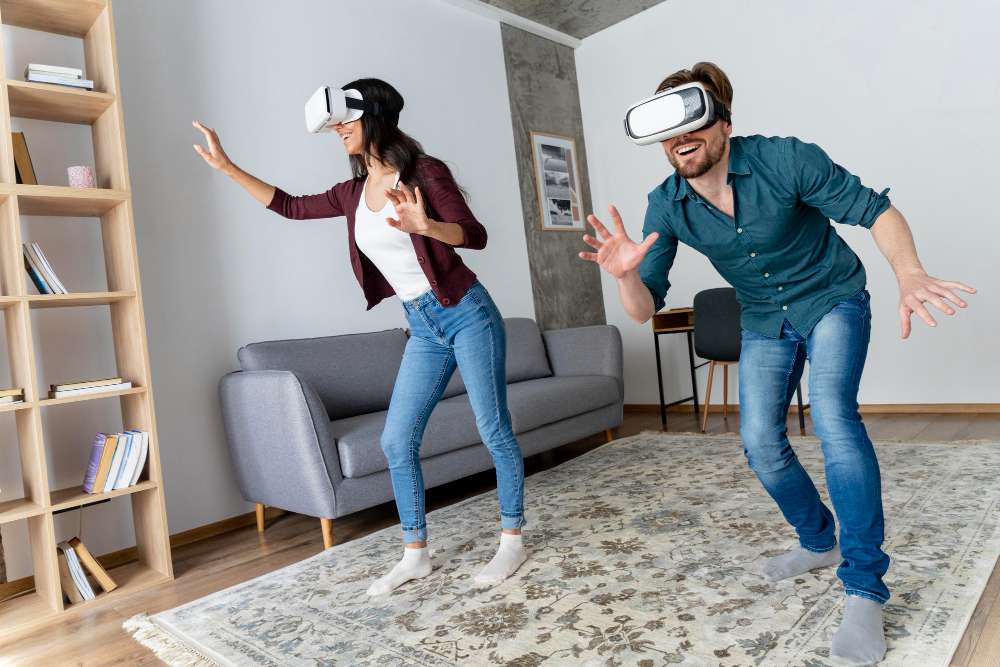
In today's fast-paced world, where technology touches every aspect of our lives, the real estate market has also transformed dramatically. Traditional methods of buying and selling homes are evolving, making room for more innovative and convenient solutions. One such revolutionary concept is the virtual tour, a digital innovation changing how people buy and sell homes in the United States. What Are Virtual Tours? Virtual tours offer a digital representation of a property, allowing prospective buyers to explore homes from the comfort of their current residence. These tours can range from simple 360-degree photographs to more sophisticated virtual reality experiences. They provide an immersive experience, enabling buyers to walk through properties, explore different rooms, and even view details such as the texture of materials and the interplay of light and space, all without setting foot in the house. The Benefits for Buyers For buyers, the convenience of virtual tours is unparalleled. Exploring numerous properties online saves time and money, eliminating the need for multiple in-person visits, which can be especially beneficial for out-of-state or international buyers. Virtual tours also help narrow the list of potential homes, allowing buyers to focus on the properties that meet their requirements. Moreover, virtual reality tours can offer an even more immersive experience, giving a realistic sense of the space and layout. A Tool for Sellers Sellers stand to gain significantly from utilizing virtual tours. Properties with virtual tours are likely to attract more interest as they're accessible to a broader audience. This digital approach can also differentiate a listing in a competitive market, potentially leading to quicker sales. For sellers, creating a virtual tour is an investment in showcasing their property in the best light, providing a detailed and interactive view that static photos cannot match. The Role of Real Estate Professionals Real estate agents and brokers leverage virtual tours to offer better services to their clients. By incorporating virtual tours into their listings, they can reach a wider audience and provide a more engaging experience for potential buyers. Additionally, virtual tours can be a powerful marketing tool, allowing agents to showcase properties more effectively and efficiently. Overcoming Challenges While virtual tours offer numerous benefits, they also present specific challenges. The quality of the virtual tour is paramount; a poorly executed tour can deter potential buyers rather than attract them. Thus, sellers must invest in high-quality virtual tours that accurately represent their property. Another challenge is the impersonal nature of online viewing. To mitigate this, some agents offer live virtual tours to interact with buyers in real-time, answer questions, and provide additional insights about the property. The Future of Home Buying and Selling As technology advances, virtual tours' role in the real estate market is expected to grow even further. With virtual and augmented reality developments, future virtual tours could offer even more realistic and interactive experiences. This digital shift is not just a trend but a fundamental change in real estate transactions. It reflects a broader move towards digitalization in our daily lives, offering convenience and efficiency. Virtual tours redefine the home buying and selling landscape, benefiting buyers, sellers, and real estate professionals. They provide a convenient, efficient, and engaging way to explore properties, making geographical barriers irrelevant. As we move forward, integrating technology in real estate promises to make buying and selling homes more accessible, transparent, and satisfying for everyone involved. In this new frontier, those who embrace digital transformation will find themselves at a distinct advantage, poised to navigate the challenges and opportunities of the modern real estate market.
Enter your email address and we will send you a link to change your password.